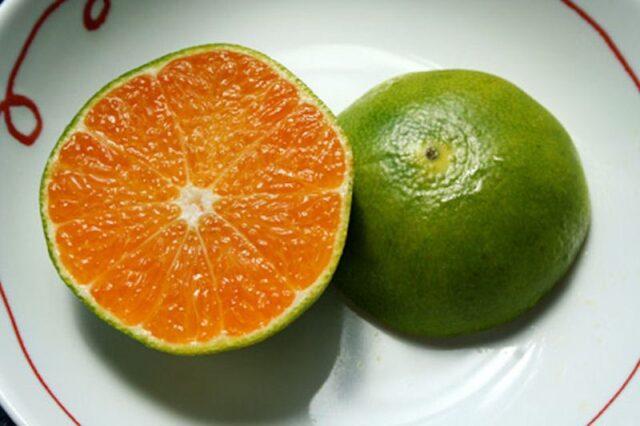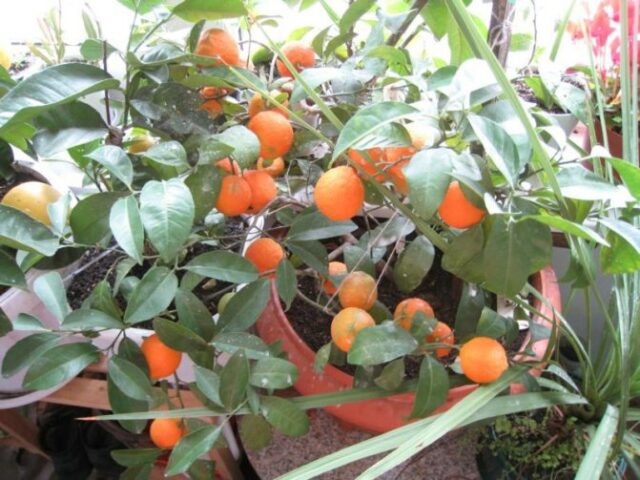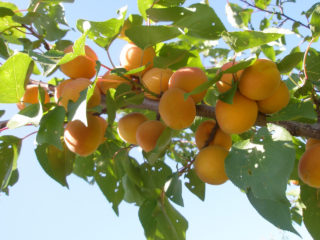Content
When buying citrus fruits in a store, almost no one thinks about what variety it is. However, the types of oranges are easy to identify visually even for a non-specialist. They are divided into several categories, the size, taste of the fruit and other features depend on this.
What types of oranges are there, what color?
Most people sincerely believe that the peel and pulp of these citrus fruits are exclusively orange. But in countries where the climate allows them to be grown in open ground, the fruits are picked from the trees green.

Green peel does not mean that the fruits are not ripe; on the contrary, it acquires an orange color gradually as it ripens and rots.
But it cannot be said with certainty that oranges are spoiled. They become like this after freezing or processing with a harmless gas - ethylene.

If citrus fruits are grown far enough from the equator, the peel will turn orange.
The pulp of most varieties is “classically” orange. There is only one species in which its shade varies from deep scarlet to grapefruit pink.They are called “bloody”.
Varieties of ordinary or oval oranges
They are cultivated on an industrial scale mainly on the Mediterranean coast (Spain, Morocco). They are valued by producers for consistently high yields and external presentation.
Gamlin
Hamlin or Hamlin, sometimes found under the name Norris, is one of the “honored”, time-tested species. It has been cultivated on an industrial scale since the beginning of the twentieth century, replacing the less cold-resistant Parson.
Hamlin is a spontaneous mutation. A promising seedling appeared in the garden of A. G. Gamlin, located in the vicinity of Glenwood (Florida). Trees of medium height (1.8-2 m), not particularly actively growing. Gamlin orange plantations consistently produce good yields, despite the influence of weather factors.
Citrus fruits ripen earlier than most other varieties and are distinguished by their shelf life and transportability. They are one-dimensional (200-240 g), spherical or slightly flattened, of medium size. The peel of the Gamlin citrus is thin, smooth, and glossy. The pulp is very tender and juicy, with a minimum of seeds, the taste is distinctly sweet, with a slight refreshing sourness.

Gamlin oranges react negatively to high humidity if this is a feature of the local climate
Verna
Verna is a late-ripening species native to Spain. Trees are 2.5-3 m high, the crown is dense, rounded. The fruit weight is average or below average (150-180 g), the pulp is sweet and juicy.There are few seeds in it.

Experts can easily “identify” Verna oranges by their characteristic elongated shape
Salustiana
Salustiana, also known as Salustiano, Salus or Pallas Salustiana, is one of the most valuable early "industrial" species for the Mediterranean. Its homeland is Spain; now it is also actively cultivated in North Africa (Algeria, Morocco).
A promising orange variety was noticed by Salustiano Pallas, who began growing it in his own gardens for sale in the 50s of the last century. It was named after the owner of the site.
The trees are tall, fast-growing, with a rounded crown. The fruits are relatively large (from 250 g), spherical, with a rough, not too thick peel of a very bright orange color. The pulp is highly juicy, aromatic, sweet, with a light oily aftertaste, practically seedless.

Salustiana oranges, even having reached full maturity, do not fall from the tree, do not lose their “marketable appearance” and taste
Varieties of navel oranges
Navel or Navel is the most numerous group of varieties, uniting oranges with a characteristic umbilical “bulge” (“embryo” of another fruit). The trees are easily identified by their shoots densely strewn with thorns.
The fruits are large (200-250 g, some specimens - up to 500-600 g), with a dense, even rough peel. They are sweet, with a slight balancing acidity.
Washington Navel
The early-ripening Washington Navel orange is known by the nicknames Washington, Bahia or Baia, and Riverside.This is one of the first “cultivated” varieties; in Australia it began to be grown on an industrial scale already in the 30s of the 18th century. But the United States played the main role in its popularization - seedlings arrived in California about 40 years later.
The origin of the Washington Navel orange could not be accurately determined. According to the two most common versions, this is a spontaneous mutation of the Brazilian variety Selecta or the Portuguese Umbigo.
Trees in open ground are tall (3-4 m) and have average growth rates. The crown is rounded, there are quite a lot of “hanging” shoots. Plants react negatively to heat and drought at the stage of flowering and ovary formation - yields are noticeably reduced.
Fruits with fine-grained peel, weighing 300-350 g, shape varies from spherical to noticeably elongated. The pulp is dense, medium juicy, very aromatic, there are practically no seeds in it. Professional tasters detect strawberry notes in the taste. Citrus fruits are distinguished by keeping quality and transportability.

Now Washington Navel oranges are the second most common “industrial” variety after Valencia
Navel Late
Navel Late is a late-ripening species. Externally, the trees and fruits are practically no different from Washington Navel. He only slightly outperforms him in keeping quality. Gourmets also appreciate it for the tenderness of its pulp.

During storage, Navel Late oranges practically do not lose their presentable appearance and consumer qualities.
Thomson Navel
The Thomson Navel variety is considered one of the “clones” of the Washington Navel orange, which appeared at the beginning of the twentieth century. It differs from the “original” in its earlier ripening period. The height of the tree is 2.5-3 m. The crown is rounded, the shoots are densely leafy.
The fruits are almost regular spherical in shape, varied in size (190-250 g). The peel is smooth, very aromatic, of medium thickness. The pulp is seedless, dense, not too juicy, noticeably fibrous, with a balanced sweet and sour taste.

Peeling Thomson Navel oranges is difficult - the peel is difficult to separate from the pulp
Navelina
Navelina, aka Smith's Early, Washington Early, Dalmau or simply "Little Navel" is a natural "mutation" of Washington Navel, discovered in California. The variety has been known since the 20s of the last century, but it began to be actively cultivated on an industrial scale only about 30 years ago. This is due to its “moving” to Europe for further development.
Navelina citrus fruits are of different sizes (190-270 g), most of them are round, but there are pear-shaped or ovoid specimens. The peel is smooth, dark orange (often with a reddish tint). The pulp is without seeds, very juicy and aromatic, slightly “loose”, rich in taste. When fully ripe, the peel at the “navel” quickly bursts.

There are “Spanish” and “Italian” versions of Navelina oranges
Kara-Kara
Cara Cara (full name: Cara Cara Navel Orange) is a mutation of the Washington Navel orange from Venezuela, discovered in 1976. The main characteristics are the same as the “original”, the main difference is the dark pink, sometimes even ruby, flesh. When cut, Kara-Kara oranges look more like grapefruits.Citrus weight is 200-220 g, round shape. The peel is smooth, of medium thickness.

Oranges of the Kara-Kara variety have a low acid content and taste similar to tangerines
Varieties of king (blood) oranges
King oranges are a group of varieties whose nickname comes from the ruby or garnet color of their flesh. This unusual shade is due to the high content of anthocyanins. Sometimes king oranges are called “Sicilian”; they have been cultivated on this island since the 9th-10th centuries.
Blood varieties are a natural mutation of the regular orange varieties. The trees are low-growing, with an elongated, rather sparse crown. The fruits are small, spherical, with a thin skin and a minimum of seeds. They are poorly cleaned. The pulp is sweet and sour, very aromatic.
Sanguinello
Sanguinello or completely Sanguinello Comune is one of the most important varieties of king oranges for “industrial” cultivation. Trees of medium height, slow growing, high yielding. Fruits weighing 150-180 g, spherical, without seeds. The peel is medium hard, noticeably “textured”. As it ripens, red specks and streaks appear on the general orange background. The pulp is dark ruby, often with a brown undertone.

The Sanguinello orange variety has long been the basis for breeders' experiments.
Moro
The Moro blood orange variety has been known since the beginning of the 19th century; it was the first of this variety to be grown on an industrial scale and exported. There is no reliable information about its origin; most botanists consider it a spontaneous mutation of Sanguinello Muscato.
Tree of medium vigor, wide-rounded crown. The fruits of Moro oranges weigh 170-210 g, the peel is almost smooth or slightly lumpy, covered with blurred stripes and spots. The flesh gradually changes color from bright orange to burgundy-purple.
Moro oranges are very aromatic and have an original delicate taste with notes of wild berries and a bitter aftertaste. Most of the fruits are collected in “clusters” of three. Having reached full ripeness, they do not fall off for a long time and retain their consumer properties. But they do not differ in good keeping quality.

In order for the pulp of Moro oranges to acquire its unique shade, differences in day and night temperatures are needed
Tarocco
The “parent” of the Tarocco orange is the ancient variety Sanguino, which is now almost never found. The tree is actively growing, of medium height and productivity. The fruits are of a typical size and shape for king oranges and are relatively easy to peel. The pulp is orange with ruby “veins”, quite loose, textured. The taste is balanced, sweet and sour, citrus fruits are very aromatic.

Due to the lack of distinctly red flesh, Tarocco oranges are sometimes called “half-breeds.”
Orange varieties for growing at home
The following orange varieties are most often chosen for cultivation in captivity:
- Marheulsky. A "dwarf" version of the Washington Navel species. The maximum tree height is 1.5 m.The shoots are dotted with frequent, soft thorns and are densely leafy. Citrus fruits weighing up to 120 g, spherical, sweet and juicy.
Marheul orange bears fruit in captivity regularly
- Arancio. A very decorative variety of oranges with variegated leaves. The height of the tree at home is 1-1.2 m, the crown is round and symmetrical. With quality care, it bears fruit without periods of rest.
The flesh of Arancio oranges is orange-pink, indicating a high concentration of lycopene.
- Pavlovsky. It is considered one of the best varieties for cultivation at home. The tree is maximum 1 m high, very graceful, with a pyramidal crown. Citrus fruits are spherical, weighing 80-90 g.
The decorative effect of the Pavlovsky orange is added by bright orange fruits, which decorate it for nine months every year.
- Cotidiana. A slow growing tree, reaching a height of 1-1.2 m. The leaves are covered with narrow grayish-white streaks. The fruits are also two-colored - orange-green.
The shape of Cotidiana oranges varies from spherical to ovoid, weight ranges from 90-100 g
Sweet varieties of oranges
Many varieties of oranges have excellent taste. Among the sweetest are:
- Ovale Calabrese. An ancient late-ripening variety of oranges native to southern Italy. It is not very popular among farmers due to its demanding cultivation conditions and care. The tree is tall, vigorous, the crown is spreading, sloppy. The fruit size is medium to large, the pulp is very juicy and tender, the peel is amber-orange.
Orange trees of the Ovale Calabrese variety look very decorative due to their almost continuous flowering
- Valencia. A late-ripening Spanish variety, one of the most popular in the world due to its sweet taste. The tree is vigorous and bears fruit irregularly. Citrus fruits are relatively small and can be noticeably flattened, elongated, or spherical. The peel is thin, dotted with small dark scarlet specks. The pulp is orange-red.
Valencia oranges are ideal for juicing
- Ruby. Mid-season variety. Tree up to 3 m high, with a compact crown, high-yielding. The fruits are medium-sized, spherical, with a thin skin. The pulp is aromatic and very tender. Its color directly depends on the cultivation conditions.
Officially, the Ruby orange is classified as a king orange, but the characteristic redness may not appear
Newest varieties of oranges
Now breeding is aimed mainly not at obtaining new varieties, but at developing hybrid forms by crossing with other citrus fruits. The results are very interesting:
- Citrange is a hybrid of sweet orange and trifoliate poncirus. The main goal of breeders was to increase frost resistance. Citrange successfully winters at -10 ºС, but does not differ in outstanding taste - it is noticeably bitter.
Citrange makes very tasty jam and marmalade
- Tangor is a hybrid of sweet orange and tangerine. The tree is quite tall, the fruits are large (12-15 cm in diameter), slightly flattened. The color of the peel varies from yellow-orange to amber. The pulp is very aromatic.
Tangor is a fairly sour fruit, but the taste largely depends on the growing conditions.
- Orangelo is an “improved” natural hybrid of orange and grapefruit, devoid of the bitterness of the latter. The tree is relatively compact, the fruits are large, elongated pear-shaped. The peel is yellow-orange, smooth, thin, the fruit is easy to peel.
Orangelo's homeland is Puerto Rico.
- Ugli Fruit is a hybrid of tangerine, orange and grapefruit, created in Jamaica. The skin of the fruit is very thick, lumpy, and the color varies from lime to orange-orange, including various shades of yellow-green. The pulp is juicy, the taste is sweet, but with a characteristic grapefruit tartness.
The name of the agli fruit is easily explained by its external unpresentability
Conclusion
Types of oranges are of interest not only to those who grow them on an industrial scale, but also to “consumers” who buy fruit in stores. There are quite a lot of varieties of citrus fruits, but it is not necessary to thoroughly understand them.



















